It's always more fun to DIY. Every week, we'll spare you a trip to the grocery store and show you how to make small batches of great foods at home.
Today: You don't need any special equipment to make these homemade soba noodles from Tess Ward of The 'Yes' Chef, so what are you waiting for?
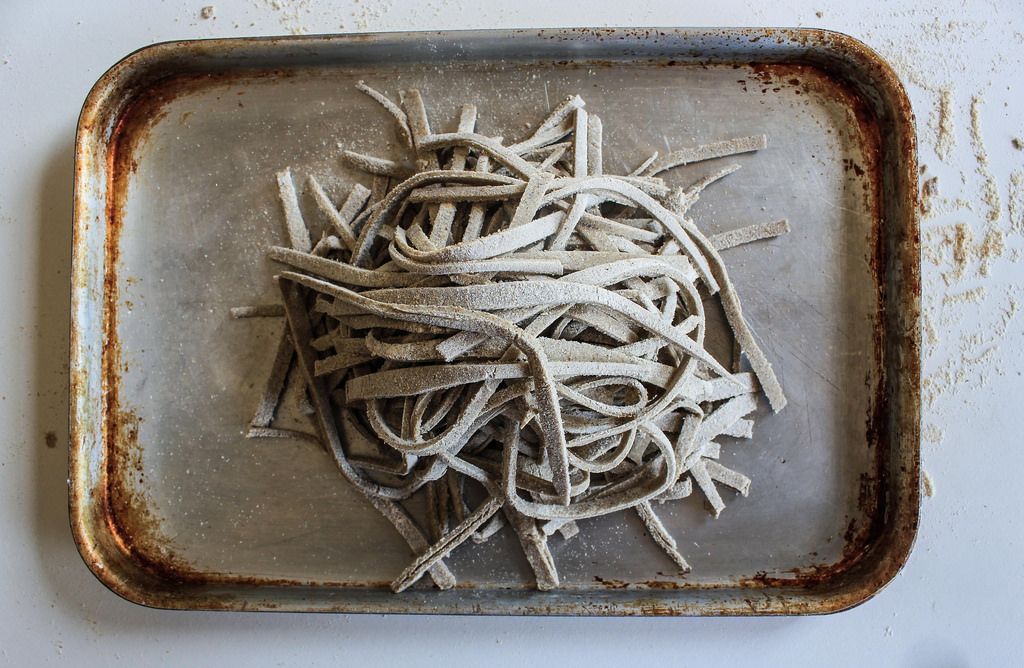
Making noodles from scratch might seem daunting, but it’s actually quite easy: You don't even need a pasta roller or any other special equipment! When my rolling pin was nowhere to be found, I used a full roll of plastic wrap in its place. It just proves that all you need is a little arm power, a big bowl, a saucepan, measuring cups, and a large flat surface to make noodles -- and delicious, homemade, wheat-free soba noodles at that. The dried variety just don’t compare!
More: This secret to cooking soba noodles that will help you avoid a tangled, globby mess.
Japanese soba noodles are traditionally made with entirely buckwheat flour. Since buckwheat contains no gluten, 100% buckwheat dough has a limited elasticity and can be difficult to work with. Combining the buckwheat with another gluten-containing flour makes the dough a lot easier to handle, and yields a better, more elastic noodle. If you want to keep the recipe wheat-free, I recommend using kamut or white spelt flour, but otherwise you can use all-purpose flour.
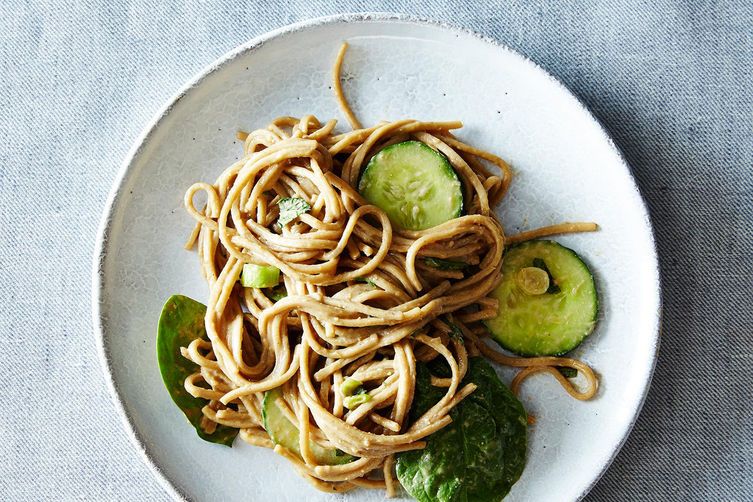
More: Put your homemade noodles to use in a Peanut Soba Noodle Salad.
I tend not to add any salt to the noodle recipe; if you are serving it with soy sauce, dashi, or any sort of salad dressing, there’s no need. I prefer to eat soba cold, but they can be served at room temperature or added to hot broths. I wouldn’t recommend using them in stir fries because they’re naturally quite sticky.
I like to serve the noodles with toasted cashews; fresh, ripe mango; and toasted sesame oil for a lovely, filling, summery noodle salad.
Homemade Soba Noodles
Serves 2
For the noodles:
1 cup buckwheat flour
1/2 cup kamut or white spelt flour (or subsitute with all-purpose flour)
130 to 150 milliliters (about 1/2 cup) hot water
Semolina flour or buckwheat starch, for dusting
To serve:
1 tablespoon garlic oil
1 tablespoon toasted sesame oil
1 tablespoon soy sauce
1/3 cup toasted cashews, chopped
3 spring onions, finely chopped
1/2 mango, cubed
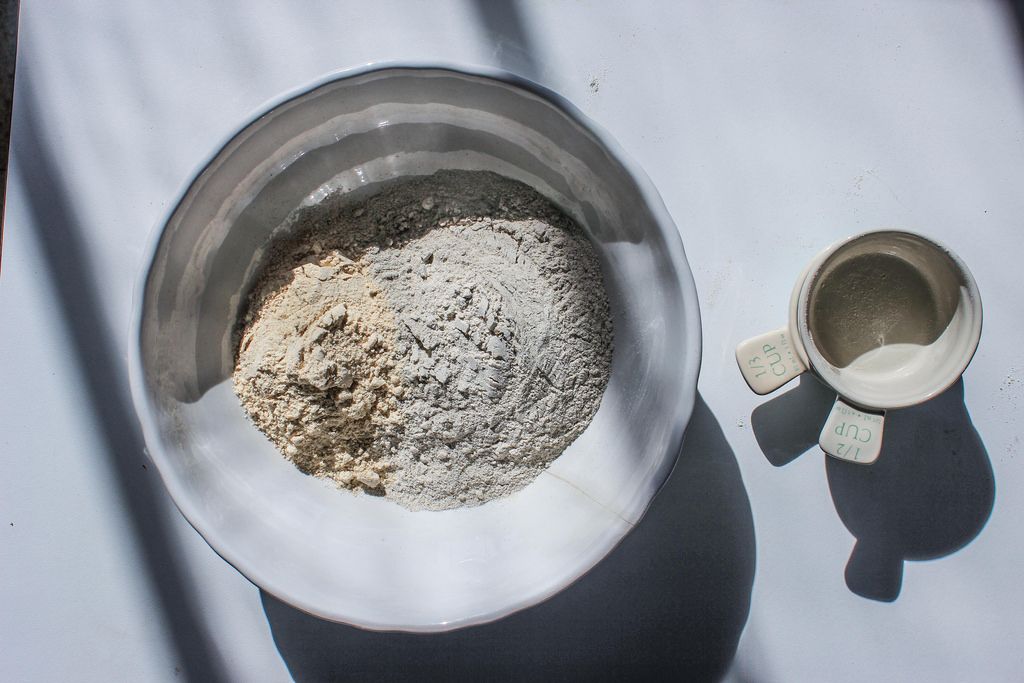
Combine the buckwheat flour and kamut or spelt flour in a large mixing bowl. Add the water gradually, and then work the flours and water together, kneading to form the dough. If at any point the dough feels too crumbly, add a little more water. Alternatively, if the dough it is too sticky, add a little more kamut or spelt flour.
Knead the dough until it comes together in a smooth, round ball, then turn it out on the counter and knead it with the heel of your hand. The dough should be soft and smooth; if any cracks appear, add a little more water.
Once it's smooth, shape the dough into a flat rectangular parcel. This will help the dough keep its shape as you roll. Sprinkle the semolina flour or buckwheat starch onto the counter and lightly over top of the dough, which will prevent sticking. Now it’s time to start rolling out the dough: The best way is to roll from the center outwards, shaping the edges as you go so that the dough remains rectangular. This will save you from having to trim later.
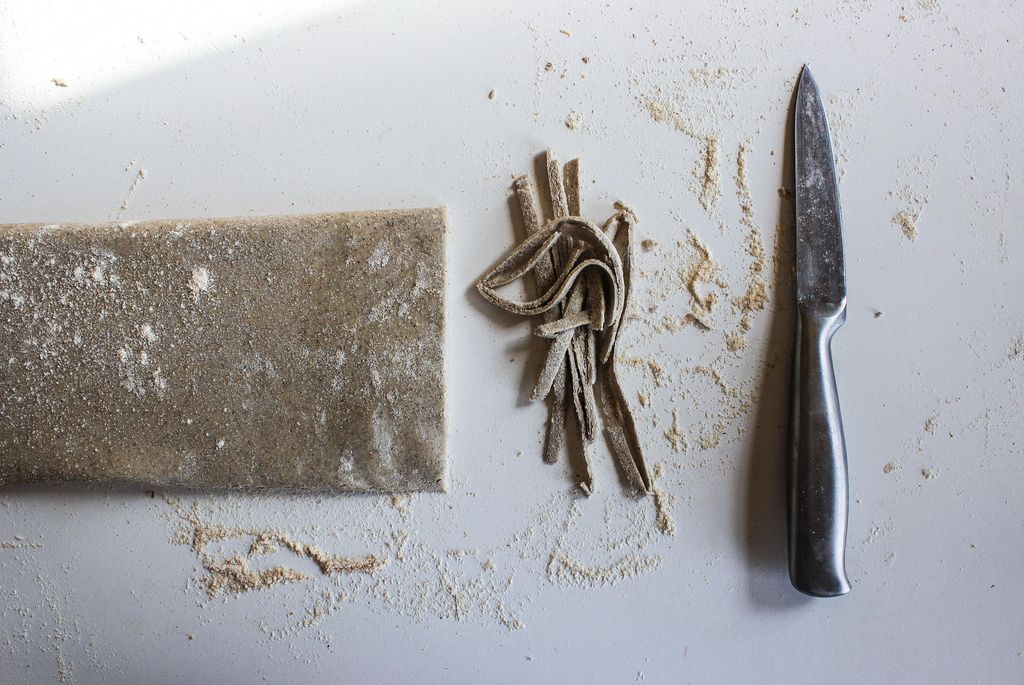
Spread a generous handful of semolina flour or buckwheat starch over the dough. Then fold the top third of the dough down and spread it with more starch. Fold the bottom third of the dough upwards, like you would fold a letter, and coat that with the semolina or starch, as well. Begin cutting the noodles approximately half a centimeter (a quarter of an inch) thick.
Keep slicing until you have used all of the dough. Toss the cut noodles with a little more semolina or starch so that they don’t stick together.
Bring a large pot of water to a boil, salt the water generously, and drop in the soba. Cook the noodles for one minute, then drain them and rinse them under cool water immediately.
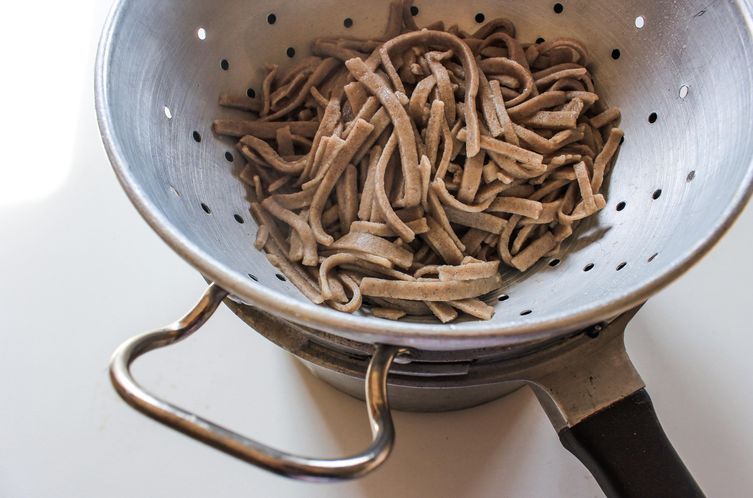
Use your hands to lift and gently shake the noodles as you rinse them; this helps to remove the starchy film that coats the noodles as they cook. After rinsing, drain the noodles and serve them cold or at room temperature. I like to toss the noodles with garlic oil, toasted sesame oil, and soy sauce. Then I scatter chopped spring onions and toasted cashews over top and finish the salad with chunks of mango.
The noodles store well in the fridge for a couple of days, and I often double the recipe and store the leftovers in a tupperware for handy lunches.

See the full recipe (and save and print it) here.
Second photo by James Ransom, all others by Tess Ward







See what other Food52 readers are saying.